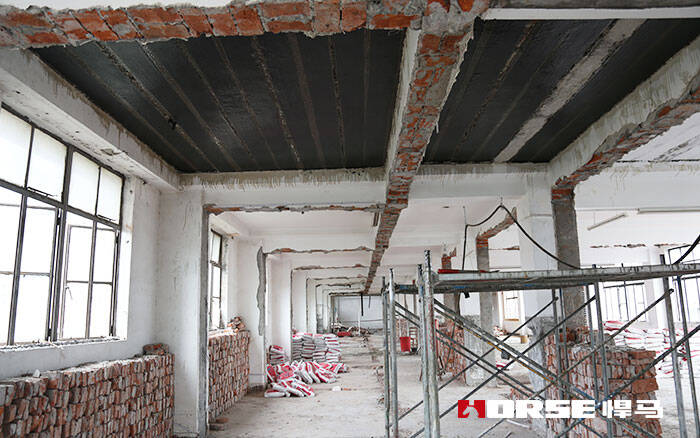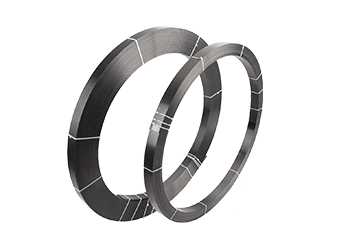Soluciones
La gama de negocios de construcción de caballos se extiende a todo el mundo y sirve a miles de clientes con productos, orientación técnica especializada en construcción, y somos testigos del reinicio de la marca china con ellos.
Reforzada Con Fibra De Carbono

I. disposiciones generales
1) la construcción seguirá los siguientes procedimientos:
1. preparación de la construcción;
2. tratamiento de la superficie de la mampostería;
3. nivelación;
4. cepilla el pegamento básico.
5. cepillar pegamento o remojar.
6. pegar hojas de fibra;
7. protección de la superficie.
2) el adhesivo se pesará de acuerdo con la proporción especificada en las instrucciones del producto y se mezclará uniformemente con una batidora hasta que el color sea uniforme. El aceite y las impurezas no deben utilizarse en contenedores y agitadores mixtos.
[nota] la contaminación por aceite y las impurezas pueden afectar el rendimiento del adhesivo, se debe prestar atención a la limpieza del recipiente de mezcla y la batidora. En la actualidad, los adhesivos utilizados en el mercado para fortalecer la estructura de ingeniería se componen principalmente de dos componentes en una cierta proporción o un solo componente. Por lo tanto, el adhesivo debe prepararse de acuerdo con las instrucciones proporcionadas por el proveedor.
3) la temperatura de construcción debe cumplir con los requisitos para el uso de adhesivos completos.
4) la humedad ambiental no debe exceder el 70% durante la construcción.
[nota] para garantizar la calidad del adhesivo, la temperatura ambiente en el sitio de construcción debe ser consistente con la temperatura de uso del adhesivo. Si no se cumple el requisito, se deben tomar medidas para cumplirlo y volver a pegarlo.
5) al pegar el tablero de fibra, el tiempo de construcción debe controlarse de acuerdo con los requisitos del adhesivo.
6) se debe evitar la flexión del tablero de fibra durante la construcción.
Durante la construcción, la flexión de la placa de fibra afectará la transmisión del estrés, lo que afectará el efecto de refuerzo. Por lo tanto, se debe evitar la flexión del tablero de fibra durante la construcción.
2. construcción
1) tejidos de fibra de carbono y sus materiales de unión
[explicación] con el desarrollo de la tecnología de producción de fibra, las propiedades mecánicas y la calidad de las láminas de fibra están mejorando día a día, y los tipos de fibras de refuerzo también están aumentando. Para hacer un mejor uso de este material, antes del refuerzo se deben revisar los certificados y los informes de prueba de los productos de tablero de fibra y adhesivo para evitar diferencias entre el diseño y el material de refuerzo real.
Las obras de refuerzo de la estructura de mampostería no deben utilizar adhesivos como resina de poliéster insaturada y resina alquídica. El pegamento base debe ser adecuado para el pegamento impregnado y el pegamento.
2) se recomienda eliminar las cargas vivas en la estructura antes del refuerzo.
La carga sobre la estructura reforzada tiene un cierto impacto en el efecto del refuerzo. Por lo tanto, se recomienda eliminar las cargas vivas que actúan sobre la estructura antes del refuerzo.
3) el tratamiento superficial de la mampostería deberá cumplir los siguientes requisitos:
1. se retirará la capa de enlucido de la estructura de mampostería de acero. cuando la superficie de la mampostería se deteriore, como intemperie, aflojamiento y corrosión, se eliminará la capa de enlucido.
2. cuando haya grietas o agujeros en la mampostería de acero, se debe diseñar una grieta o un diseño cerrado.
3. la superficie de la mampostería debe limpiarse y mantenerse seca.
[nota] para garantizar una adherencia confiable entre la estructura de mampostería y el tablero de fibra, antes de unir el tablero de fibra, se debe eliminar la capa de enlucido en la superficie de la mampostería y donde se produce la intemperie, aflojamiento y corrosión. Al mismo tiempo, para evitar grietas secundarias causadas por grietas en la mampostería de acero, es necesario rellenar o sellar las grietas en la mampostería de acero.
4) la nivelación de la superficie de mampostería debe cumplir con los siguientes requisitos:
1. los materiales de Nivelación se proporcionarán de acuerdo con los requisitos de rendimiento estipulados en las normas nacionales.
2. el material nivelado se utiliza para rellenar las costuras grises de la mampostería y las cóncavas de la superficie, sin ningún ángulo.
5) la Imprimación deberá cumplir los siguientes requisitos:
1. el adhesivo se preparará de acuerdo con las instrucciones del producto y sus propiedades cumplirán con los requisitos de la figura 3.
2. la superficie del material nivelado debe secarse y cepillarse.
3. el pegamento de base debe aplicarse uniformemente en la superficie de la mampostería con un cepillo o cepillo de tambor. La superficie del pegamento base debe unirse inmediatamente después de secarse.
La gelatina se refiere al Estado en el que acaba de llegar el gel, es decir, la superficie del pegamento en el sitio de construcción tiene una sensación de gel, pero no se adhiere al pegamento.
6) la tela de fibra adhesiva se llevará a cabo de acuerdo con los siguientes procedimientos y requisitos:
1. la tela de fibra debe cortarse de acuerdo con el tamaño de diseño.
2. se preparará e impregnará uniformemente en la zona de la barra de acero.
3. al pegar la tela de fibra, se debe utilizar un tambor especial para rodar varias veces en la dirección de la fibra, exprimir las burbujas de aire y sumergir completamente el adhesivo impregnado. El laminado se laminará de una dirección o de medio a ambos lados en orden y no dañará la fibra.
4. al pegar una capa de tela de fibra, repita los pasos 1 - 3 y pegue la siguiente capa inmediatamente después de sumergir el pegamento en la superficie de la tela de fibra y secarlo.
5. aplicar uniformemente el pegamento impregnado sobre la superficie de la última capa de tejido sin fugas ni plenitud.
[nota] el adhesivo impregnado se utiliza para fijar las hojas de fibra al mismo plano, protegerlas y presionarlas juntas. Por lo tanto, debe estar completamente sumergido en el tablero de fibra. Cuando se utiliza un rollo especial para enrollar la hoja de fibra, puede rodar desde el Centro en una o dos direcciones, pero no permite rodar repetidamente de ida y vuelta para evitar daños a la fibra y afectar la calidad de la adherencia.
Desde la superficie del adhesivo impregnado hasta el siguiente paso del período de curado completo, el efecto de unión es el mejor, y cuando hay una base de prueba, el adhesivo impregnado también puede adherirse a las hojas de fibra después del curado completo.
El pegamento impregnado se puede aplicar uniformemente en la superficie de la última capa de tela de fibra para garantizar que el pegamento impregnado esté completamente impregnado en la lámina de fibra.
7) el pegado de la placa de fibra se llevará a cabo de acuerdo con los siguientes procedimientos y requisitos:
1. cortar la placa de fibra de acuerdo con el tamaño de diseño;
2. cuando la superficie del tablero de fibra no es áspera, la superficie de Unión del tablero de fibra debe ser áspera.
3. se debe preparar y aplicar el adhesivo de tablero de fibra; La superficie del adhesivo de tablero de fibra debe limpiarse y aplicarse inmediatamente el adhesivo de tablero de fibra preparado. la capa adhesiva debe ser elevada y el espesor mínimo no debe ser inferior a 2 mm;
4. la placa de fibra recubierta con adhesivo debe presionarse suavemente y adherirse a la posición de Unión diseñada. Se utilizará un rodillo de Goma para rodar uniformemente en la dirección de la fibra y se garantizará la compactación.
5. al pegar dos capas de tablero de fibra, se debe pegar continuamente. Los lados del tablero de fibra inferior deben ser ásperos y limpios. Cuando la siguiente capa de tablero de fibra no se puede pegar de inmediato, se debe volver a limpiar el tablero de fibra inferior antes de comenzar a pegar el tablero de fibra.
Para garantizar el efecto de refuerzo, la placa de fibra debe cortarse de acuerdo con el tamaño de diseño. Las herramientas de Corte pueden estar hechas de sierras de acero, ruedas de molienda o cuchillos de diamante de Disco. Las placas no deben superponerse y superponerse, por lo que la longitud real debe determinarse antes del Corte para evitar el desperdicio de materiales.
La superficie del tablero de fibra está limpia y el adhesivo es uniforme y rico, lo que puede garantizar la calidad de la adherencia. Cuando dos capas de tablero de fibra se unen, los lados del tablero de fibra inferior se rugen para garantizar la calidad de la unión.
8) la protección de la superficie se llevará a cabo después de que se complete el tablero de fibra adhesiva y el material adhesivo se solidifique completamente. La construcción de protección superficial debe cumplir con las disposiciones pertinentes de la actual norma nacional de construcción de ingeniería anticorrosiva GB 50212 y garantizar una combinación confiable de materiales de protección y paneles de fibra.
[nota] la protección de la superficie es proteger las placas de fibra y los adhesivos de las estructuras de mampostería reforzadas del medio ambiente dañino. La estructura de mampostería debe tomar las medidas de protección correspondientes.
3. seguridad en la construcción
1) las materias primas del adhesivo de tablero de fibra deben almacenarse selladas, alejadas de la fuente de fuego y evitando la luz solar directa.
2) la preparación y el uso del adhesivo deben estar bien ventilados.
3) el personal sobre el terreno debe tomar medidas de protección laboral.
4) cuando el CFRP se utilice para la construcción de refuerzo, se debe mantener alejado del equipo eléctrico y la fuente de alimentación o tomar medidas de protección confiables.
Puede encontrar cualquier cosa que necesite, confíe en probar estos productos y encontrará la gran diferencia después de eso.

Tejido de fibra de carbono unidireccional de alta resistencia para refuerzo de compuesto de polímero reforzado con fibra (FRP).

Impregnación y pasta de componentes reforzados de superficie y productos de fibra.

Lámina de fibra de carbono pultruída para reforzamiento de estructuras